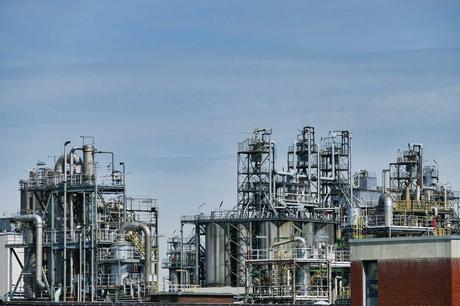The USD/CAD is at the 2018 lows at 1.2573, though crude prices have spiked up. Rising crude prices are preventing the currency pair from moving lower.

USD/CAD Takes Support from Crude Price above $64
The USD/CAD is trading at multi-year lows at levels last seen in April 2018. After surging to 1.4670 in March 2020, the currency pair is on a downtrend.
Currently, the US dollar against the Canadian dollar is at the 1.2570 level. If the US dollar against the Canadian dollar moves past this resistance level, the currency pair may move upwards to the next resistance at 1.2590 or to the next level at 1.2610 levels.
Support for the USD/CAD currency pair is at 1.2550 levels, while another support is at 1.2525. The supply of US dollars into Canada increases when crude prices improve, which has prevented the downslide in the currency pair.
USD/CAD Stabilized by the Crude Oil Rally
Export of crude oil from Canada to the United States is high. Canada produces more oil than it requires, and exports of crude oil form an important part of its trade. It has around 840,000 kilometres of pipelines carrying oil from Canada to US refineries and for domestic purposes. Canada exports more than 3 million barrels of crude and allied products to the US, making it the highest supplier of crude oil to the US.
Crude prices have rallied to $64 levels. The OPEC+ countries have decided to continue their present production cuts. In particular, Saudi Arabia will continue its current production cuts at 1 million dollars per day in April.
Oil prices went up 6% on Wednesday when a container ship ran aground in the Suez Canal. It will keep oil prices firm, which is weighing on the US dollar against the Canadian dollar.
Crude prices have picked up after the OPEC + countries have extended production cuts until May. There has been a rebound in oil demand from the US, stimulated by the post-pandemic global recovery, which helps the Canadian dollar.
Meanwhile, Canadian big oil sands are showing a good recovery. Bitumen is obtained from the oil sands to make heavy crude oil to make diesel, gasoline, jet fuel, and other petroleum-based products. Bitumen is sent to North America through pipelines and rail or marine transport. Natural Resources are expected to bring in $4.3 billion in 2021 or C$5.4 billion as free cash flow, while previously, it was at C$692 million in 2020.
Suncor Energy is spending additionally towards repurchasing shares and repaying debt in February. 10% of its capital is allotted towards the cogeneration project. Suncor CEO Mark Little says that the capital markets have to be given importance.
The oil sands companies have started to prioritize emission reductions. Bank of Montreal has set a target of net-zero emissions by 2050.
Bank of Canada Lowers Purchase of Bond
Bond yields in Canada have eased. Bank of Canada has lowered the purchase of the bond. 10-year bonds were down 4.3 basis points, lower by 1.51%. 5-year yields are at seven basis points.
Bank of Canada will slowly reduce stimulus efforts as the economy has shown growth. The April monetary policy by the Central Bank is expected to be less dovish, which will support the currency. The bank may announce Quantitative Easing in the policy meeting to be held in April say, economists, which will affect the USD/CAD currency pair.
Manufacturing Activity Improves in Canada
Canada exports almost 75% of the US requirement, which is boosting the economy. Oil exports to the US have improved, as the pandemic effects are coming down.
Manufacturing PMI has increased in March to 58.5, an improvement from the February data at 54.8. Building Permits show growth by 2.1% in March from the previous month. Factory activity shows the fastest expansion in March, much better than activity in February.
The economy has grown for the ninth consecutive month, as per January data. Experts say that 2021 will bring in better improvement in trading activity. Once the economy improves, it will bring faster growth in the country say, analysts.
The Canadian dollar has been the best performing among other G10 currencies. Good recovery in the domestic economy is helping the Canadian currency. Fiscal plans in Canada are helping to improve economic activities too.
The Lonnie has gone up 1.4% against the US dollar index for the first quarter ended March 2021. Higher crude oil prices have stabilized the Canadian dollar stronger.
Covid-19 infections continue to spread in Canada, and leaders are working hard to prevent the third-wave of infection from raising its head. Third-wave infections are posing a threat to the economy. Though vaccine rollouts are improving, the fear about the third wave causes alarm. Many countries like Europe and Asia are seeing an alarming jump in Covid cases.
US Dollar Index
President Joe Biden is considering a new stimulus plan called "Build Back Better", by which $2.0 trillion will be spent on infrastructure.
The US dollar is flat against most other currencies. Investors are moving away from trade due to the Easter holidays. The US dollar is on an uptrend, especially with a good report about the economy. The robust rebound in the United States is keeping the US dollar index steady. The US stimulus package spill over will encourage a higher demand for oil from Canada.

